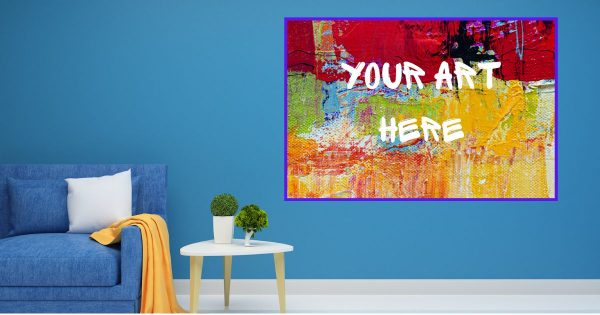[ad_1]
A group show can kickstart your art career by bringing together like-minded artists and pooling precious resources. So what are the dos and don’ts of a successful group show?
What is a group art show?
A group show can be anything from a handful of artists putting on a small show at a community venue to a large exhibition at a museum or gallery.

Who is in the group?
Ideally, a group show will have a single element that brings the works together. That element could me the medium or subject. Or it could be that you are all inspired by a geographical area but approach it very differently. Look at Drawn to the Valley in South West England who use geography to tie their work together rather than using the same medium.
Your group may be inspired by a movement where artists share similar intents (for example, raising awareness of climate change) but have no visible link in either medium, style or subject.
If you don’t have a group, you may need to join one. Start with social media and look for groups that have some link with your work. You can also start by getting involved with an open studio trail.
Benefits of a group art show
A group show has great value for the artists involved. Firstly, it combines the power of joint marketing. Secondly, the artists benefit from peer support. Art can be a lonely pursuit and being part of a group can create a collegiate atmosphere and shared learning opportunities.
One downside is when the success between group members varies significantly, i.e., artists whose work sells out versus artists who have no sales.
Curating your work
There is an art form to curating a group show. Visitors will generally move around a room left to right, spotting something farther away they want to look at. In this way, curating the work can be a vital part of its success.
If you are doing a show through a gallery, they will have plenty of expertise on how to curate the exhibition. But if you are doing it yourself, you will need plenty of time to see the intended pieces and decide — as a group — what should go where.

Dividing up the workload and costs
If all goes well, group shows are brilliantly democratic. That said, you’ll need to be intentional when dividing up the workload. Consider the following:
- Members need to agree to a schedule for who will be at the show during its open times.
- You’ll need to split the costs and have it sorted in advance (venue rental, insurance, refreshments, etc.).
- Everyone should be available for set-up (hanging work, etc.) and take-down duties.
Organizing your own group shows: a few more things to consider
- Make sure all the work is for sale.
- Have a range of price points. Start with small prints or stoneware for under $20 and increase gradually to large paintings, ceramics or sculptures with equally sizeable price tags.
- Offer regular open hours and ensure it is staffed during open hours (artists can cover in a rotation).
- Work out how payment will be taken. Checks are the easiest as they can be written out to the artist. If you offer electronic payments, you will need to set up a studio bank account where the money can go before being disbursed to the artist.
- Make it look professional. When we walk into a gallery we expect whitewashed walls, well-hung work with good lighting and professional displays.
- In terms of health and safety, you might need to look into liability insurance if you are inviting people into a venue.
Looking to organize your own open studio or home gallery event? Find out more:
- How to set up a professional art studio
- Joining an art group
- How to make a living as an artist
- How to set up your own art gallery
[ad_2]
Source link



